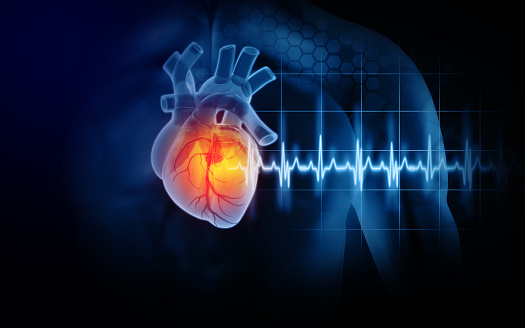The treatment of carcinoid heart disease depends on the early diagnosis of the disease. Early surgical treatment may lead to the best results. This article reviews the current literature on this disease. It also discusses the survival rates of individuals with this disease. In addition, it discusses the symptoms and treatment options for people with this condition.
Symptoms
Carcinoid heart disease symptoms can be difficult to recognize. Although the signs and symptoms are similar to other types of heart diseases, they differ in terms of severity. A few of the most common symptoms include a mild to moderate right ventricular dilatation and a cardiac murmur. A carcinoid heart disease screening test can identify the symptoms early in a patient’s life.
Patients with carcinoid heart disease should receive a specialized assessment and management plan involving a multidisciplinary approach. Treatment is complex and requires the expertise of cardiologists, cardiac surgeons, NET specialists, anesthesiologists, and radiologists. Therapy options may include cardiac valve replacement or pharmacotherapy for the cardiac symptoms.
The diagnosis of carcinoid heart disease is based on a biomarker that measures NT-proBNP (a neurohormone released by the heart’s atria and ventricles). This biomarker has a cutoff level of 260 pg/ml or 31 pmol/l and is helpful for screening patients for carcinoid heart disease. The researchers found that the median NT-proBNP level was significantly higher in patients with carcinoid heart disease.
Although the symptoms of carcinoid heart disease can be difficult to identify, researchers are beginning to identify some of the symptoms associated with the condition. A significant increase in urinary 5-HIAA levels is associated with carcinoid heart disease, as is facial flushing. In a prospective study of 252 patients with carcinoid heart disease, flushing was an independent predictor of progression.
Diagnosis
Diagnosis of carcinoid disease is crucial to ensure appropriate treatment. The disease is associated with a poor prognosis and can be fatal if untreated. However, advances in cardiac imaging, antitumor therapies, and cardiovascular surgery have improved the prognosis of this condition.
The recommended screening for carcinoid heart disease includes a morphological evaluation and a full hemodynamic assessment. In addition, echocardiography is a noninvasive method that does not expose patients to ionizing radiation. This means that it is safer for patients, especially those requiring serial studies. Additionally, echocardiography is safe to use in patients with cardiac devices, unlike CT scanning. Finally, echocardiography provides a complete morphological assessment and a full evaluation of the heart. These features are crucial in assessing the severity of carcinoid heart disease.
Diagnosis of carcinoid disease is difficult and requires a multidisciplinary approach, which includes cardiologists, oncologists, NET specialists, and radiologists. Treatment for carcinoid heart disease involves a team approach with the involvement of cardiologists, cardiac surgeons, and hepatic cytoreductive surgery. In patients with severe tricuspid regurgitation, surgical replacement is often recommended.
In addition to a clinical assessment, laboratory values are critical in the diagnosis of carcinoid heart disease. Patients with elevated plasma levels of 5-hydroxyindoleacetic acid (also known as 5-HIAA) are more likely to develop carcinoid heart disease than patients without the syndrome.
Diagnosis of carcinoid disease is important to ensure optimal treatment for patients with the condition. In addition to the cardiac manifestations of carcinoid heart disease, carcinoid syndrome is often accompanied by symptoms of heart failure. Initially, carcinoid syndrome manifests as right-sided heart failure. The condition causes thickening of the heart valves, causing valvular stenosis or regurgitation. Carcinoid syndrome is also associated with the development of vasomotor symptoms.
Diagnosis of carcinoid disease is often made with echocardiography. This method is relatively safe and well-validated. It is the preferred primary investigation for patients with carcinoid heart disease. Further, it is widely available and less expensive than other cardiac imaging techniques.
Treatment
The treatment of carcinoid heart disease is complex and a multidisciplinary approach is recommended. It involves the participation of cardiologists, cardiac surgeons, NET specialists, radiologists, and anesthesiologists. Multidisciplinary treatment also includes pharmacotherapy to reduce the secretion of 5-HIAA and cardiac valve replacement in selected patients.
The new guidelines include practical advice on diagnosis, management, and surveillance. They were developed by a multidisciplinary consensus panel that included cardiologists, oncologists, gastroenterologists, endocrinologists, and cardiologists. They are intended to help healthcare providers provide better, more consistent care for patients.
In addition to presenting with symptoms of right heart failure, patients with carcinoid heart disease often have valvular dysfunction. In some cases, the heart is the only organ affected. Although this is rare, it can lead to tricuspid regurgitation and valvular dysfunction. Of those who experience tricuspid regurgitation, approximately half are asymptomatic and do not have a cardiac murmur. Some patients may also develop peripheral edema and pulsatile hepatomegaly.
Patients with severe valvular dysfunction should undergo valve replacement surgery. In addition, patients should receive medical therapy, including octreotide and somatostatin analogs. Both of these treatments can improve the patient’s chances of survival. Following valvular surgery, patients should be monitored every three to six months to check their progress. During these follow-ups, laboratory tests, and echocardiography may be performed to confirm the outcome of the surgery.
After cardiac valve replacement and restoration of cardiac function, liver surgery may be an option for some patients. This procedure can decrease the levels of 5-HT, a hormone responsible for the symptoms of carcinoid heart disease. It can also prevent recurrence of the condition in certain patients.
In addition to valvular involvement, patients with carcinoid heart disease can also experience symptoms of heart failure. In the early stages, patients with carcinoid heart disease may present with right-sided heart failure. A patient with a confirmed diagnosis of carcinoid heart disease should be referred to a cardiology or cardiac surgery department staffed by experts in treating carcinoid heart disease.
Several studies have shown that carcinoid heart disease can progress rapidly. A prospective study conducted by Bhattacharyya et al. showed that plasma 5-HIAA levels were predictive of heart disease progression.
Survival rate
The Kaplan-Meier plot was used to estimate the overall survival of patients with carcinoid heart disease (CHD). The survival rate was compared in both groups of patients based on their age, gender, and presence of the disease. The median survival for patients with CHD was 13.6 years, while that of patients with the disease without CHD was 4.8 years.
Generally, carcinoid heart disease affects the right ventricle and is characterized by fibrosis of the valves and ventricles. Patients with known or suspected carcinoid heart disease should have a screening echocardiogram every six months. Although the disease may start without symptoms, early detection is critical. The best treatment is to undergo cardiac surgery before heart insufficiency reaches a high stage.
Treatment for patients with CHD involves multidisciplinary care and is aimed at reducing symptoms. Indications include diuretics and angiotensin-converting enzyme inhibitors. Some patients may also require treatment with somatostatin analogs, which decrease serum levels of serotonin. However, these therapies have not been proven to reduce the incidence of CHD.
Survival rates for patients with carcinoid heart disease vary, but there is good news for patients with advanced carcinoid disease. In a recent analysis of 17 carcinoid heart disease series, the median survival was 2.6 years. The reason for the high mortality rate was the severe hemodynamic consequences of the disease. Although biological valves survive in this disease, severe pulmonary valve regurgitation can adversely affect right ventricular remodeling.
Symptoms associated with carcinoid syndrome included frequent bowel movements and facial flushing. Patients with hepatic metastatic lesions suffered from bronchospasms. A majority of patients had at least 6 bowel movements per day. These symptoms affect their daily life.
In addition to circulating vasoactive substances, the tumors produce transforming growth factor-b, which increases the heart’s fibrosis rate. During this process, the right side of the heart surfaces will be covered with a layer of plaque, a mixture of fibroblasts, smooth muscle cells, and extracellular matrix.
Although a patient’s overall survival rate for carcinoid heart disease remains low, standard treatments can improve symptoms and improve the quality of life. However, these medications must be used judiciously. In addition, the patient’s cardiovascular status must be monitored for any complications.



